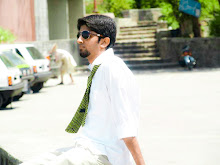The Bugatti Veyron 16.4 is the most powerful production car, more expensive, the fastest street-legal in the world with a proven top speed of over 400 kmh (407 km / h or mph 253). Reached full production in September 2005. The car is built by Volkswagen AG subsidiary Bugatti Automobiles SAS and is sold under the brand Bugatti. It is named after racing driver Pierre Veyron, who won the 24 Hours of Le Mans in 1939 for the original Bugatti firm.
Vehicle development began with the 1999 EB 18 / 3 cars "Bugatti" concept. Presented at the Tokyo Motor Show, which was similar in design and appearance of the final production of Bugatti cars. An important difference is the use EB 18 / 3 of a W18 engine with three banks of six cylinders. The Veyron was designed by Hartmut Warkuss Volkswagen instead of Italdesign Giugiaro, who had treated the three concepts before Bugatti.
VW Ferdinand Piech said the president of the Veyron production in the Geneva Motor Show 2001. It was promised to be the fastest, most powerful car and most expensive in history. Instead of the W18, the production model using a W16 engine VR6/WR8-style. First seen in 1999 Bentley Mulsanne straight concept, W16 would get four turbochargers, producing a quoted 1001 horsepower (see engine section for details on power). Top speed was promised about 403 km / h (250.4 mph), and the price has been announced for € 1 million (U.S. $ 1,300,000 at the time).
Development continued throughout 2001 and the EB 16 / 4 Veyron was promoted to "advanced concept" status. In late 2001, Bugatti announced that the car, officially called the Bugatti Veyron 16.4, which will enter production in 2003. However, the car had major problems during development. Achieving the necessary high-speed stability was difficult - one prototype was destroyed in an accident and another shot in a public ceremony in the Monterey Historics event in Mazda Raceway Laguna Seca. Production of the Veyron was delayed pending the resolution of these and other issues.
Piech retired this year as chairman of the Volkswagen group and was replaced by Bernd Pischetsrieder. The new chairman promptly sent the Veyron back to the drawing board for major changes. Neumann was replaced as Bugatti president by Thomas Bscher in December 2003 and significant changes were made to the Veyron under the direction of former VW engineer, Bugatti Engineering head Wolfgang Schreiber.
After leaving the car, it was reported that while each Veyron is being sold for £ 840 000, the car's production costs are around £ 5 million per vehicle. As Bugatti, Volkswagen and therefore are a waste, which has been likened by automotive journalist Jeremy Clarkson to Concorde, which are benchmarks of progress in technology and developed as exercises in engineering.
In the case of a Veyron, it will take several years before Volkswagen will be able to see if their investment in the development of innovative technologies have been successful. An important measure is how much (if any) of the technology developed for the Veyron finds use in cars.
The first Veyron personal property made its debut in front of the Hotel de Paris in Monte Carlo during the Grand Prix 2005.
Specifications
The Veyron features a W16 engine-16 cylinders in 4 banks of 4 cylinders, the equivalent of two V8 engines mated in narrow-angle V-configuration Each cylinder has four valves, for a total of 64, but the narrow V8 configuration allows two camshafts to drive two banks of cylinders so only need four camshafts. The engine is fed by four turbochargers and displaces 8.0 L (7993 cc/488 in ³) with a square of 86 by 86 mm bore and stroke.
Put this power to the ground is a dual-clutch DSG computer-controlled manual transmission with paddle shifter 7 speed driving time to enjoy a round of 8 ms. The Veyron can be driven by a fully automatic transmission. The Veyron also features full-time all-wheel drive developed by Haldex helping to transfer power to the road. Uses special Michelin run-flat tires designed specifically for the Veyron to accommodate the speed of the vehicle.



















0 comments:
Post a Comment